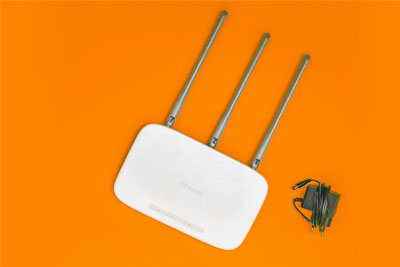What is an ONT for a Fiber Optic Network?

Not sure why your home needs an ONT for fiber connectivity? Discover what a fiber ONT is, why it's necessary, and how it works in our comprehensive guide.

Not sure why your home needs an ONT for fiber connectivity? Discover what a fiber ONT is, why it's necessary, and how it works in our comprehensive guide.
Fiber internet is lightning-fast, highly reliable, and the perfect choice for households with lots of devices. But before you can enjoy top-notch download speeds and low latency, your local fiber network needs a way to connect to your home.
That’s where ONTs or “optical network terminals" come in. Today, let’s break down the meaning of an optical network terminal and why your home needs a fiber ONT to connect to a fiber network.
Put simply, an ONT is a special device that connects properties to broader fiber networks. Just like how cable connections need modems to function, ONTs are necessary for both fiber to the premises (FTTP) and fiber to the home (FTTH) networks. Also called “fiber boxes,” fiber ONTs are typically installed on inside of the building, similar to how you would install a modem. They serve as signal endpoints, collecting data from fiber networks and translating it into a format that can be read by computers or routers. Without ONTs, easy fiber connectivity wouldn't be possible. In effect, a fiber ONT does the same job as a traditional cable internet modem, but for fiber connections specifically, and while they are similar, it's worth keeping in mind that ONTs will only work with fiber connections, and modems will only work with cable.
In any fiber optic internet network, a network service provider transmits internet data through pulses of light. This is part of what enables fiber internet to be so fast and suitable for a wide range of different online activities.
However, routers and other connected devices don't understand data as light pulses. Instead, they need those light pulses translated into electrical signals that they can read. ONTs carry out this critical task. Here's how it works:
You can think of a fiber optic ONT as a two-way gateway for speedy, streamlined communication between users and the larger internet.
Modern devices – like your desktop or WiFi router – are not designed to receive light pulses and understand what they mean. Instead, they’re designed to receive electrical signals, which they can then translate into binary code for computer operations.
Fiber ONTs are required to get the speed benefits of fiber optic internet connectivity. Thanks to ONTs, internet data can travel at the speed of light for the vast majority of its journey, and it only transforms into an electrical signal at the final stage when it reaches your computer or WiFi router.
There are different types of optical network terminals you might need for a fiber network. Most residential ONTs are small and secure from outside tampering – they may be mounted on the interior or exterior wall of your home. Exterior optical network terminals are typically weatherproof, too.
Meanwhile, businesses might benefit from fiber ONTs that have built-in routers or that include hardware support for special features like Voice over Internet Protocol (VoIP) functions and services. Advanced security elements may be additionally included in these fiber ONTs.
Overall, though, every ONT serves the same purpose for a fiber network by facilitating data translation between fiber light pulses and local area network electrical signals.
Fortunately, you don't have to worry about setting up a fiber optical network terminal in your home if you want to get the benefits of this internet type. Instead, setting up an ONT is a normal part of your home fiber installation.
That means your fiber internet service provider will handle this task for you. They’ll schedule an appointment to set up your home’s fiber optic ONT, in addition to any other infrastructure or hardware that might be necessary to guarantee consistent connectivity, on a date that works for your schedule.
Once your ONT is installed, you won't need to access it or adjust any of its settings to enjoy fast fiber internet. In fact, you should never tamper with a fiber ONT – accessing and configuring it requires special tools and knowledge. This is one element where ONTs and coaxial cable modems differ; you can install a modem by yourself, but ONT installation is best handled by the experts.
At Glo Fiber, we make enjoying the speed and reliability of fiber internet easier than ever. We have multiple internet plans with multi-gig speeds, and our experienced technicians will find the perfect location for a fiber ONT while accounting for your existing internet infrastructure.
Why wait? Contact us today to learn about fiber internet availability, or check out our internet plans to learn more about what we offer.